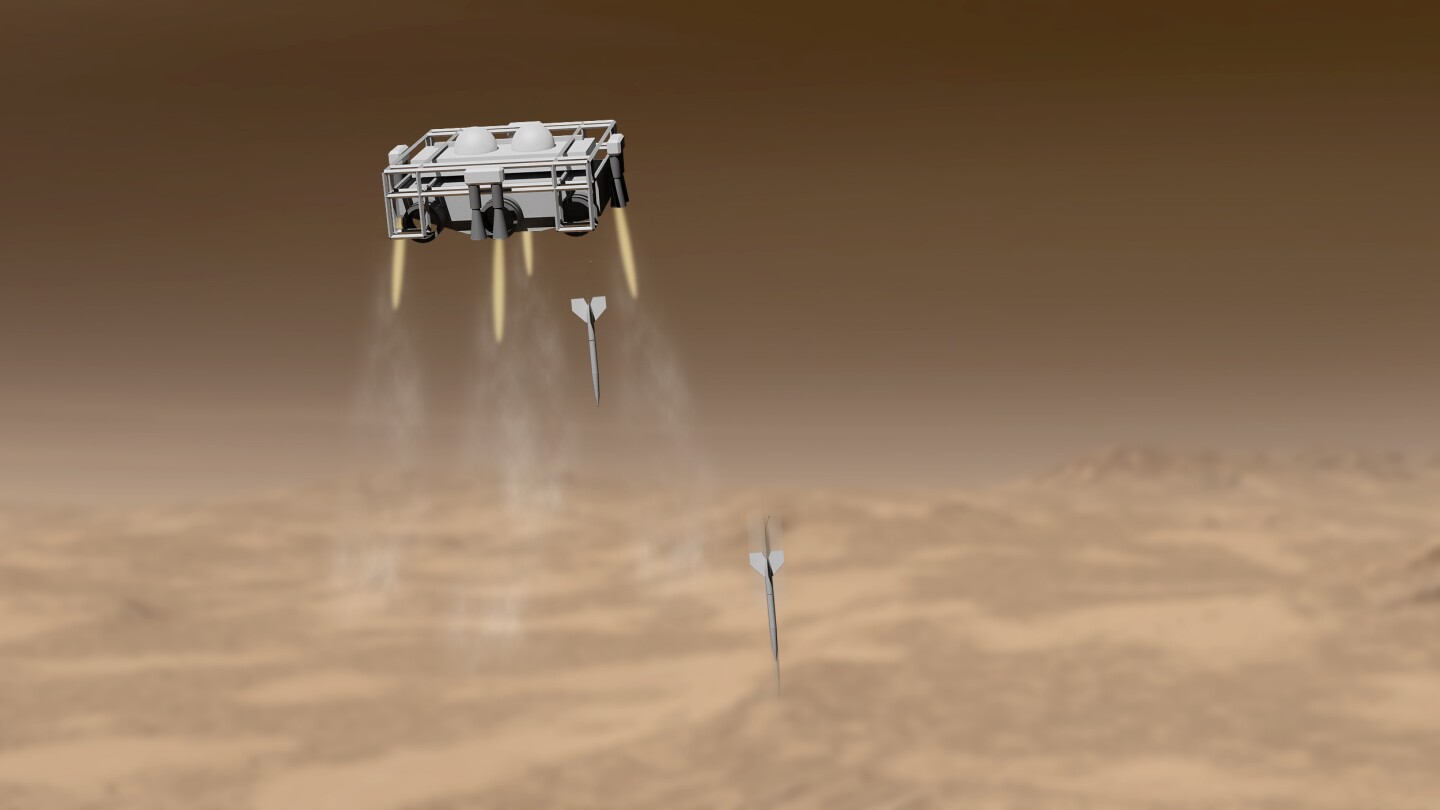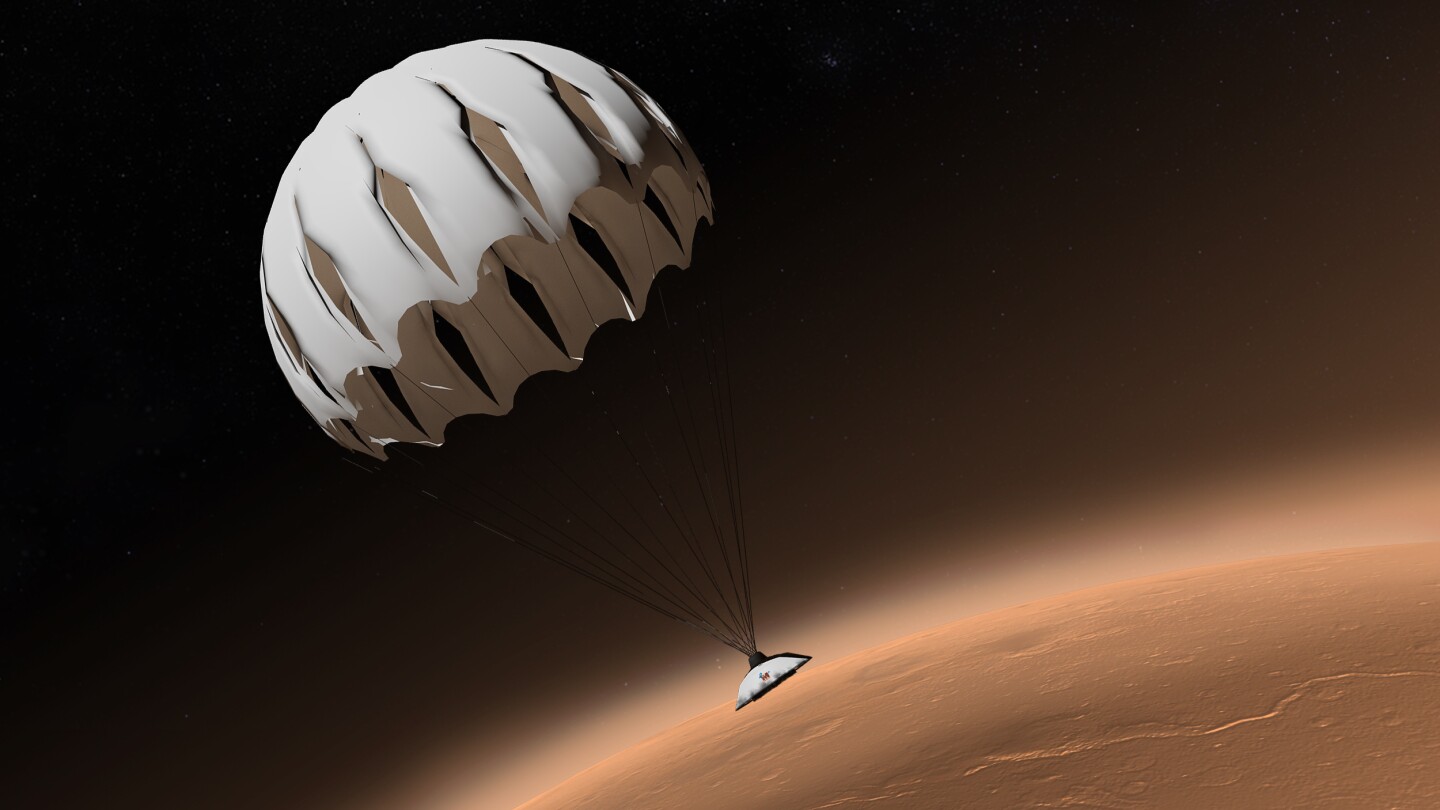If there’s life on Mars, it will have a great impact on Earth. But to answer the question, a group of engineers want to make an impact on Mars. Explore Mars, Inc., a private organization made up technologists and former NASA engineers, wants to look for signs of any present life on Mars not by scratching about on the surface, but by dropping supersonic lances on the planet that will penetrate deep into the Martian soil to seek out protected, potentially wet strata where life might still exist.
ExoLance is designed to take up where the Viking missions of the late 1970s left off. In these first successful Mars landers, there was an experiment on board that looked for signs of life being directly present in the Martian soil. Conceptually, it was a very simple idea. Viking scooped up some soil, deposited it inside the automatic laboratory in the lander, squirted a nutrient solution into the sample, and the laboratory analyzed the gases given off that might indicate the presence of life being.
However, in practice, it was a bit more complex. The Viking experiment did give off gases that seemed like they were due to living organisms, but it later turned out that these were due to the Martian soil being very chemically active as a result of the extremely dry conditions and constant bombardment of UV radiation.

Because of this, NASA has preferred to focus more on geology to gain a better understanding of the Martian environment rather than looking for life directly. But Explore Mars wants to go back to the direct approach by combining an experiment similar to the Viking lab, with technology developed for the Curiosity rover, and a delivery system based on the US Air Force’s bunker-buster weapons.
How it works
Explore Mars wants to send a probe to Mars that, initially, looks a lot like Curiosity. This isn’t surprising, because the group wants to reuse the aeroshell that protected the Mars rover on its descent to the surface in 2012. When the shell reaches Mars, it will open up and reveal a delivery vehicle similar to the Skycrane that delivered Curiosity to the surface by hovering under rocket power while it winched the lander down. In the case of ExoLance, the vehicle, called a Quiver, will hover, but instead of lowering a rover, it will fire multiple penetrator probes at the ground.

These penetrators, called Arrows, are small, lightweight versions of the bunker-buster bombs developed during the 1991 Gulf War, only instead of explosives, they’ll carry scientific instruments. When the Arrows strike the surface of Mars at supersonic speed, they split in two in a manner similar to NASA's Deep Space 2 probe. With the tail section remaining on the surface to act as a transmitter back to Earth, the nose bores about 5 m (16 ft) into the Red Planet in hopes of finding protected layers that contain water, yet are shielded against the deadly surface radiation.
Once in position, the Arrow activates its experiment, which is designed to not only detect signs of living organisms, but also to determine if the life signs are those of microbes similar to those found on Earth, or have a completely different origin.
The mission is the subject of an Indiegogo crowdfunding campaign aimed at raising US$250,000. The group says that within a year of raising its Indiegogo funding, it would develop and build Arrow prototypes and test them in the Mojave Desert by dropping them from aircraft. The idea is not only to see if the experiments can survive the impact, but also to make sure that the penetrators don’t dig in too deep or too shallow.

In addition, the group expects the Arrow to undergo several iterations as it deals with problems, such as the volume of the cylinder, batteries, deploying the tether linking the two segments, and making sure the components can withstand the impact. In the second year, the group would move onto Phase II, which would concentrate on developing the microbial experiments. If this is successful, the group plans to approach NASA or commercial companies to arrange delivering ExoLance to Mars.
So far, the crowdfunding campaign that runs through September 29 has raised just over $14,000, with 41 days left to run.
The video below introduces the ExoLance project.
Sources: Indiegogo, Explore Mars









![The Ti EDC [everyday carry] Wrench is currently on Kickstarter](https://assets.newatlas.com/dims4/default/0ba225b/2147483647/strip/true/crop/4240x2827+0+3/resize/720x480!/quality/90/?url=http%3A%2F%2Fnewatlas-brightspot.s3.amazonaws.com%2F59%2Fb2%2F6a6fdd0348a8bfdad88bbcefec53%2Fdsc03572.jpeg)